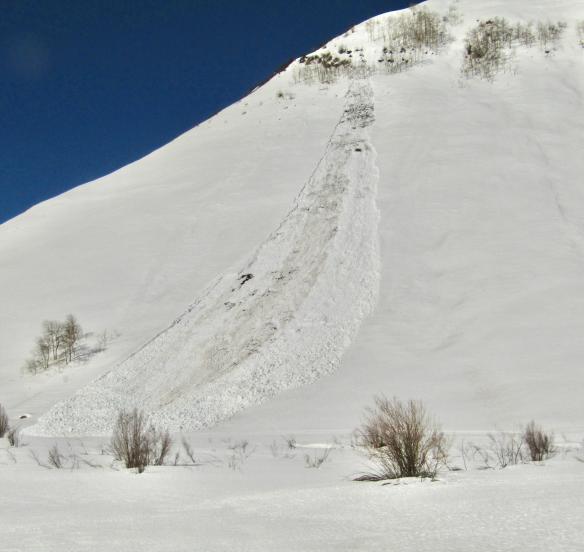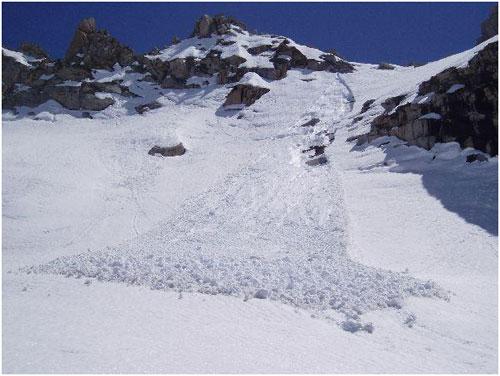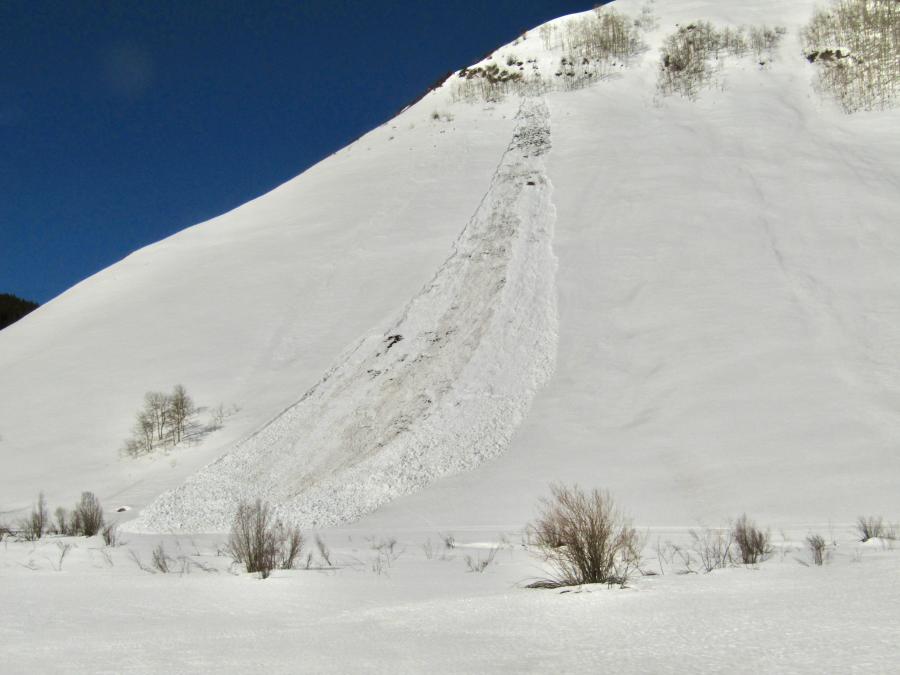Loose Wet
Release of wet unconsolidated snow or slush. These avalanches typically occur within layers of wet snow near the surface of the snowpack, but they may quickly gouge into lower snowpack layers. Like Loose Dry Avalanches, they start at a point and entrain snow as they move downhill, forming a fan-shaped avalanche. They generally move slowly but can contain enough mass to cause significant damage to trees, cars or buildings. Other names for loose-wet avalanches include point-release avalanches or sluffs. Loose Wet avalanches can trigger slab avalanches that break into deeper snow layers.
Travel when the snow surface is colder and stronger. Plan your trips to avoid crossing on or under very steep slopes in the afternoon. Move to colder, shadier slopes once the snow surface turns slushy. Avoid steep, sunlit slopes above terrain traps, cliffs areas and long sustained steep pitches. Further reading: Avalanche Essentials–Wet Slab
How They Form
Loose Wet avalanches form in new snow or old surface snow that is warming. Warming temperatures, strong solar radiation, or rain-on-snow make the surface snow damp or wet. As the water content increases, the snow becomes unconsolidated. They start at a point and entrain additional snow as they move downhill, and have a characteristic fan-like shape.
Where They Are
Loose Wet avalanches form at or near the snowpack surface. Like Loose Dry avalanches, most Loose Wet avalanches start on very steep slopes. If a Loose Wet avalanche entrains a very large amount of snow, it can run long distances on low-angled terrain. They can form in any aspect. Because they are often associated with solar radiation, they are most common on sun-exposed slopes.
Timing
In Colorado, Loose Wet avalanches are most likely in the late winter and early spring. Loose Wet avalanches are usually problematic for a period of hours at a time. There may be a daily cycle, as the sun warms the snow surface and makes Loose Wet avalanches more likely. The potential for Loose Wet avalanches can increase rapidly. Because they are often associated with solar radiation, the aspects where Loose Wet avalanches are likely can change through the day as the sun moves east to west.
Recognition
There are many clues that Loose Wet avalanches are likely. Monitor the snowpack surface for a layer of wet, slushy snow more than several inches deep. Water may be visible between the ice grains. On small, very steep test slopes, the surface layers will slide easily. Fresh roller balls–little snowballs–falling off trees and cliff bands indicate that the snowpack surface is getting weak.
Treatment and Avoidance
Avoid steep, sunlit slopes above terrain traps, cliffs areas and long sustained steep pitches. Sluff management in extreme terrain is an effective technique for skilled riders. Travel when the snow surface is colder and stronger. Plan your trips to avoid crossing on or under very steep slopes in the afternoon. Monitor the snowpack surface, and move to colder, shadier slopes once the slush layers form.






